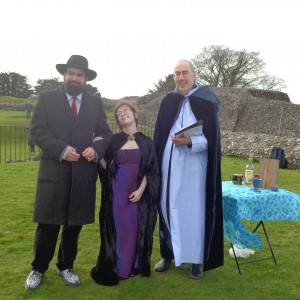
by Michael | Apr 1, 2014 | Blog
People are always asking me what a handfasting is. I confess, before I became a Civil Celebrant, I had never heard of it, so I am happy to pass on what I have learned.
There’s no straightforward answer, actually, because it depends on the degree of handfasting you’re interested in.
What are its Origins?
The ceremony (not in the form we know it today) dates back some 4,000 years to the Celts.
In the Middle Ages, a “handfasting” was used as a term meaning engagement to be married. Once the couple had formally declared their vows to each other, they were legally married. During the handfasting, each of the pair would take the other by the right hand and declare out loud that they there and then accepted each other as man and wife.
A Lovely Touch
If you just like the idea, your celebrant can include a handfasting in your wedding (or vow renewal) ceremony after saying your vows. Prince William and Kate had some ribbons draped over their hands during their wedding, because they accepted that it was a beautiful ritual.
A Different Perspective
Many people, particularly pagans, see the handfasting ceremony as comprising their wedding itself. Rather than being an ‘incidental’, or a ‘lovely touch’, this can be seen as a vital component.
The prayers and readings may invoke the four elements (earth, wind, water and fire) to bring blessing to the couple. A variety of symbols (which could include, salt and incense) play a part, and several people may be invited to be active participants.

The Pagan Ceremony
The type of handfasting chosen depends upon the type of pagan involved in the ceremony.
The marriage vows can be for “a year and a day”, when the cords or ribbons are loosely tied, symbolising that the handfasting is a commitment, but not more; after a year and a day, the couple can return and repeat their vows with the cords tightly knotted (as now this is considered binding). Alternatively, the vows can be for “a lifetime”, “for all eternity” or “for as long as love shall last”.
Some ceremonies, as we have seen, are incidental to the wedding; others can last up to an hour. Some are very traditional, others quite modern. Most are conducted within a ceremonial circle (symbol of eternity).
Tying the Knot
The symbolic act of tying a married couple’s hands together may be relatively recent (though based on tradition). In fact, the use of ribbons and cords may date from this millennium.
Be that as it may, the idea of “tying the knot” comes from this custom. In some cases, the story goes, the couple was supposed to remain bound together until midnight!
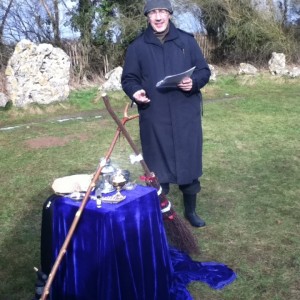
However you view a handfasting, it is a delightful ceremony that can really enhance your wedding. It is deservedly gaining in popularity – and, of course, can be held in some wonderful venues, such as stone circles including, if you get in early enough, Stonehenge. Imagine that!
Michael Gordon can help prepare and conduct a tailor-made civil ceremony in or around London or, indeed, in Europe.
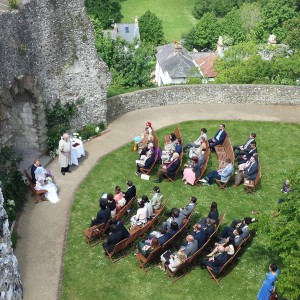
by Michael | Feb 11, 2014 | Blog
Your celebrant can make or break your wedding day. Choosing the right one is therefore of paramount importance. So where do you start?
Your Ceremony
Initially, you have to decide what type of ceremony you actually want. If it’s a full religious one, you will probably hold it in your own church/synagogue/temple, etc. Then it’s relatively simple, as there is a formula for these services that just needs to be followed.
If you go for a register office wedding, the same holds true, and of course there will be no religious element whatsoever in the service. It may also come across as a bit bland.
To get the best of both worlds, you can combine register office (or religious service) and civil ceremony. For example, hold the (legal) wedding in the morning and then have the ceremony that actually fits with your dreams later in the day.

The ceremony – on the most important day of your life – should be a deeply personal experience that reflects both your and your partner’s values and style.
That’s where a civil celebrant can come in. But how do you choose the right one for you?
Find your Civil Celebrant
Unless you already know of a celebrant through a referral, say, you will probably turn to Google. You may want to look under affiliated groups (eg FOIC, British Humanist Association, etc.). People listed there will have been trained and offer minimum standards (often excellent ones, in truth). Otherwise, you might key in “Civil Celebrant Harrow” and, hopefully, Vows That Wow will appear!
Check your Celebrant out
Once you’ve found a possibility or two, you will want to look at their website. They should have testimonials, but, possibly more important, they may have a video, which will give you an idea of the sort of person they are. You will not want to work with someone you feel uncomfortable with!
First Contact – what to ask
Having settled on someone, these are things you need to find out:
- First, establish if the celebrant is free on the date you have in ind
- If so, check they are prepared to travel to conduct your ceremony
- Ask about legal requirements, as licensed premises have strict rules
- Of course, you need a quote (although trusting and liking them should be more important)
- Ask how they work – ie is there an initial meeting (where?) – and what the fee includes
- Try and get a sense of their experience, enthusiasm and character
- Check how flexible the ceremony may be (eg can you write your own vows?)
- You may want to ask about length of ceremony (although this will very much depend on your requirements)
If you feel happy that you would like this celebrant to conduct your ceremony, then your gut feeling is probably the thing to go with. However, make sure you read and understand their Terms & Conditions; there shouldn’t be any nasty surprises, especially with a bona fide professional, but it’s always as well to be vigilant.
Working with a professional will be a pleasure. You will be free to enjoy the unforgettable, unique experience that is precisely what you are looking for.
Michael Gordon can help prepare and conduct a tailor-made life-cycle civil ceremony in or around London or, indeed, in Europe.

by Michael | Jan 29, 2014 | Blog
It’s all go!
What a busy few days for me (but I’m not complaining!)!
In addition to a handfasting wedding last Saturday and no fewer than two funerals in one day next Friday, I have a Wedding Show (Harrow Arts Centre) to look forward to on Sunday. I’ve commissioned a lovely floral display for my stand, so I’m hoping to be able to show a few pictures in my next blog.
The Handfasting
But it’s last weekend that I’d like to talk about, when I conducted a handfasting on Old Sarum.
The Setting
The setting was spectacular. We were allocated a lovely rectangular grassy spot in the Castle ruins, overlooking, as well as a flooded plain, the ruins of the old cathedral.
Having an outdoor ceremony the last weekend of January on an exposed hilltop with the winter we’ve been having might be said to be tempting providence. I had to drive through heavy rain for a couple of hours the evening before to get to Wiltshire, so I feared the worst. Then my arrival home after the ceremony coincided with thunder, lightning and hailstones! So what about the intervening spell?
The Weather
Miraculously, it was dry – in fact, the sun came out for quite a time – and unseasonably warm. I did eventually get cold, as I was up there early, to set up the space, and the wedding party arrived half an hour late, but to spend two hours, as I did, up there without ill effects was quite remarkable. I had a close encounter with a hawk (wondering if it was a vulture, preparing to feast on my frozen body!).
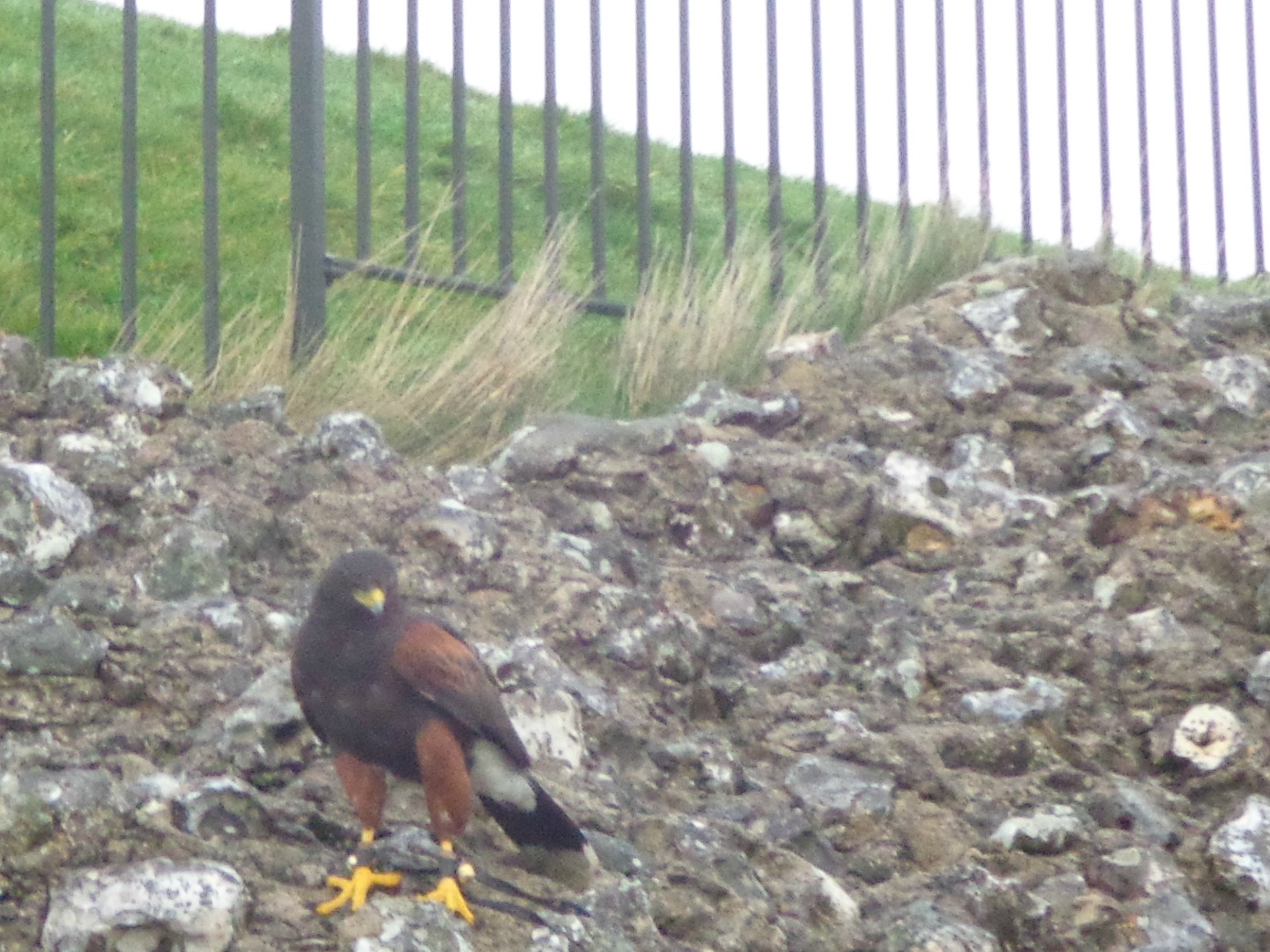
The Ceremony
The ceremony was part-pagan, part-Jewish, which is original, if nothing else! The rituals included representatives of the four elements blessing the couple, the handfasting itself, the bride walking round the groom seven times and the breaking of a glass underfoot.
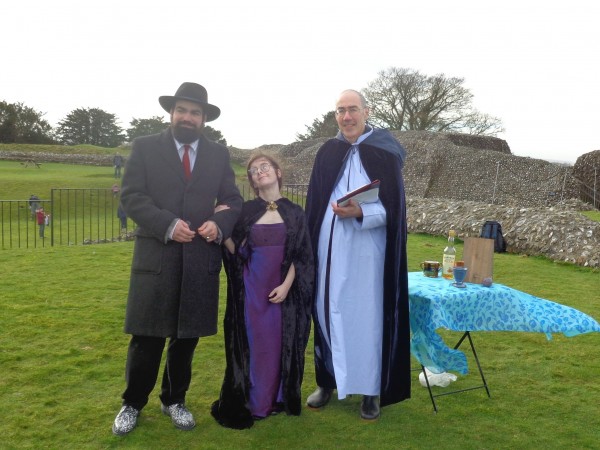
I’m delighted to say that it was much enjoyed by all and I’m looking forward to my next one.
Never a dull moment as a celebrant – just one of the perks of the job.
Michael Gordon can help prepare and conduct a tailor-made life-cycle civil ceremony in or around London or, indeed, in Europe.
by Michael | Dec 24, 2013 | Blog
What a privilege! I am a few weeks away from celebrating a handfasting at Old Sarum , Wiltshire. Yes, it may well be very cold and wet, but it will be a wonderful experience!
What’s special about Old Sarum?
Old Sarum is an intriguing and important historical site located on the conjunction of two trade routes and the river Avon.
The Iron Age site is some 5,000 years old. It is unique because it combines a royal castle and cathedral within its fortifications. It was a major centre of both secular and ecclesiastical government for 150 years.
The hill fort is roughly oval in shape and 400 metres long by 360 wide. There is a double bank with a ditch in between.
The hill fort became a town under the Romans before becoming a Saxon stronghold against the Vikings. Under the Normans, the perimeter was walled and a castle built in the centre protected by a dry moat. Finally, in the 11th century, a royal palace was built within the castle.
The cathedral was demolished in the 13th century in favour of the wonderful new building which still stands in Salisbury. The castle retained its administrative importance for another century or so before falling into gradual dereliction.
So this is where I am privileged to be conducting a handfasting later this month. An exciting prospect!
Michael Gordon can help prepare and conduct a tailor-made life-cycle civil ceremony in or around London or, indeed, in Europe.






